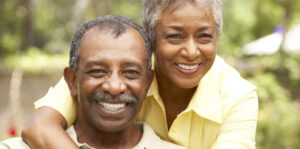How to Safety Proof Your Home for Seniors
Ensuring a Secure Environment
As our loved ones age, their mobility and physical capabilities often decrease, which can lead to increased risks of accidents and injuries within their own homes. Safety proofing a home for an elderly person is not only a proactive measure to prevent accidents, but also a way to promote their independence and quality of life.
Understanding the Need for Home Safety Modifications
The home environment that once felt comfortable and safe can become a landscape filled with hazards for aging adults. Common risks include falls, which are the leading cause of injury among seniors. By implementing safety measures, you can drastically reduce these risks and ensure that the home remains a safe haven.
Key Areas of Focus for Safety Proofing
1. Enhancing Mobility and Stability
- Install Grab Bars and Handrails: Essential in bathrooms, hallways, and on staircases, grab bars and handrails provide support and stability, helping to prevent falls. Consider installing grab bars that are easy to grip and durable.
- Improve Flooring: Remove or secure all area rugs with non-slip pads to prevent slipping. Consider replacing high-pile carpets with smoother, firmer surfaces that are easier to walk on.
- Stair Safety: If needed, install a stairlift to help seniors move safely between floors. Ensure that stairs are well-lit and have sturdy handrails on both sides.
2. Reducing Risks in the Bathroom
- Remove Lose Rugs or use Non-Slip Mats: Place non-slip mats in the bathtub and on shower floors to prevent slips and falls.
- Adjust the Water Heater: Lower the setting on the water heater to prevent accidental scalding, a common injury among seniors.
- Elevated Toilet Seats: Install raised toilet seats with arms to assist seniors with sitting down and standing up more easily.
3. Securing the Kitchen
- Reorganize Kitchen Storage: Move frequently used items to shelves that are easily accessible without the need for stepping stools or bending down.
- Automatic Shut-off Appliances: Consider using appliances that automatically shut off after a period of non-use. This reduces the risk of fires.
- Clear Pathways: Keep the kitchen floor clear of any obstacles that can cause trips.
4. Improving Overall Home Safety
- Enhance Lighting: Increase lighting throughout the home to improve visibility, especially at night. Install nightlights in hallways, bedrooms, and bathrooms.
- Emergency Response System: Set up a Life Alert system or a home monitoring system to ensure help is readily available in case of an emergency.
- Remove Trip Hazards: Secure loose wires and declutter floors to prevent falls.
Promoting Safety in Daily Activities
Educating seniors on the importance of maintaining safety through simple daily routines can significantly enhance their overall security. Here are some practical tips:
- Routine Check-Ins: Regular visits or check-ins can help monitor the senior’s well-being and ensure that the home remains a safe environment.
- Encourage Safe Practices: Promote the use of appropriate footwear, taking medications as prescribed, and the use of assistive devices if needed.
- Stay Active: Encouraging gentle exercises can help improve balance, coordination, and strength, reducing the risk of falls.
Monitoring and Maintenance
Ensuring an elderly person’s safety is an ongoing process. Regularly inspect safety installations like grab bars and handrails to make sure they are secure. Keep an eye on the wear and tear of assistive devices, and replace any item that no longer functions as intended. Regular assessments of the living environment and feedback from seniors can help identify new hazards and areas for improvement.
Conclusion
Safety proofing a home for an elderly person requires careful consideration of their specific needs and potential risks. By implementing strategic modifications, promoting safe practices, and maintaining a regular review system, you can create a safer, more comfortable environment that supports the well-being and independence of seniors. Remember, the goal is not just to prevent accidents but to enhance the quality of life, providing peace of mind to both the elderly and their caregivers.

